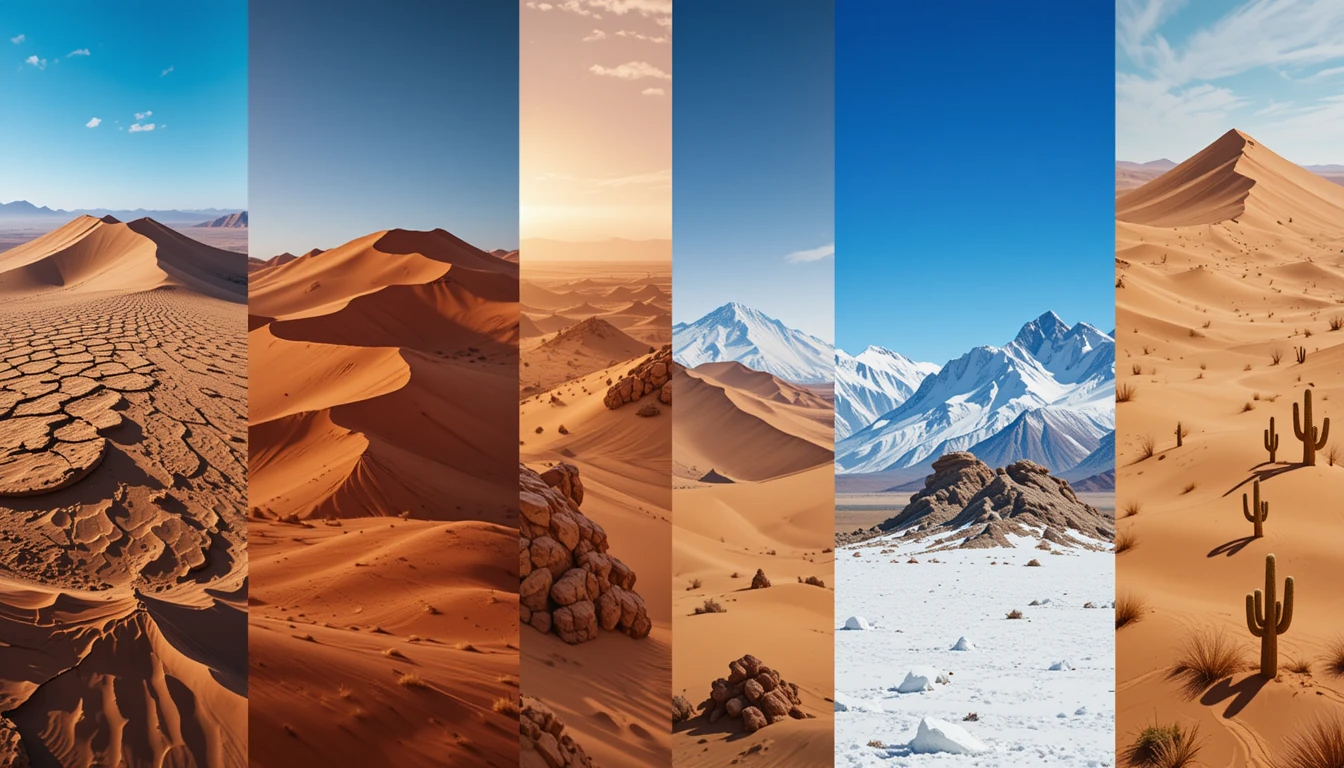Top 10 Deserts of the World
10 Top Deserts of the World showcase the stark beauty and survival power of nature. These sprawling arid regions are far more than empty, sandy landscapes—they are dynamic ecosystems filled with life, history, and geological surprises. While deserts might seem lifeless at first glance, they’re home to some of the most resilient creatures and oldest cultures on Earth.
Whether it’s the blistering heat of the Sahara, the icy winds of Antarctica, or the fossil-rich Gobi, each desert tells a unique story of survival and transformation.
What Is a Desert?
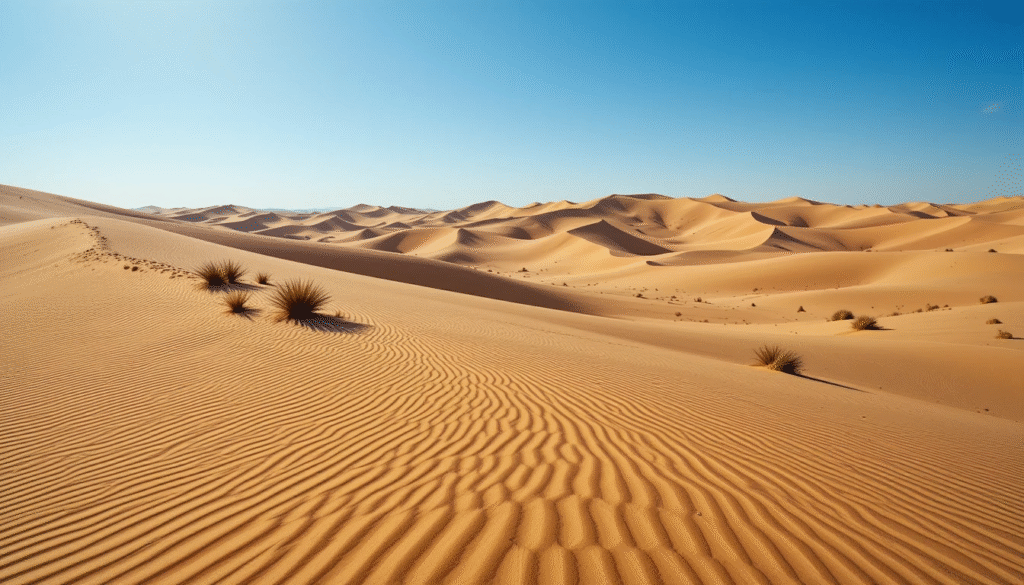
A desert is defined by its low annual precipitation—generally less than 10 inches (250 mm) per year. Contrary to popular belief, deserts aren’t always hot. They are classified as:
- Hot Deserts (e.g., Sahara, Arabian)
- Cold Deserts (e.g., Gobi, Antarctic)
Despite the dry climate, deserts support diverse flora and fauna, from cacti and succulents to camels and reptiles.
1. Sahara Desert – Africa
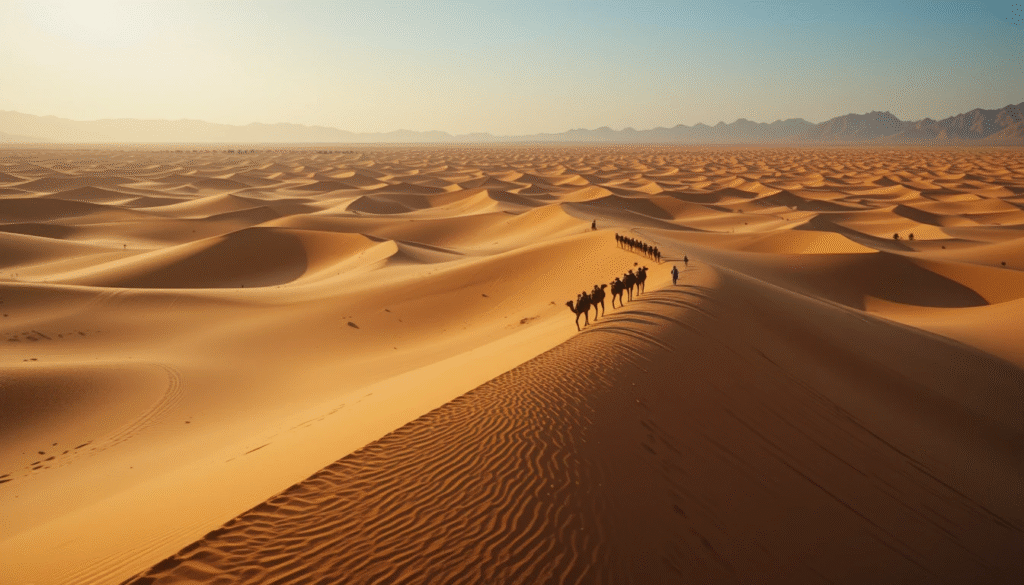
The Sahara Desert is the largest hot desert in the world, covering over 9.2 million square kilometers across North Africa. It spans 11 countries and features iconic sand dunes, oases, and rocky plateaus.
- Interesting Fact: Some dunes can rise over 180 meters high.
- Life: Home to Fennec foxes, addax antelopes, and desert nomads.
- Tourism: Camel safaris, dune surfing, and Berber culture tours.
2. Arabian Desert – Middle East
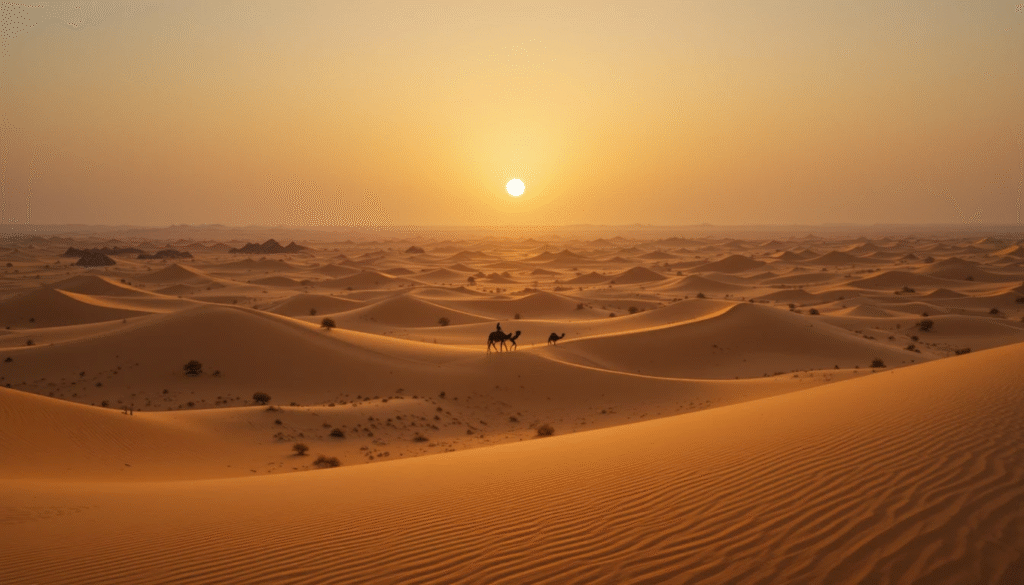
Covering most of the Arabian Peninsula, this desert is known for its blistering heat and vast sand expanses. The Rub’ al Khali (Empty Quarter) is the largest continuous sand desert on Earth.
- Countries: Saudi Arabia, UAE, Oman, Yemen
- Key Sites: Liwa Oasis, Bedouin tribes, sand seas
3. Gobi Desert – Mongolia & China
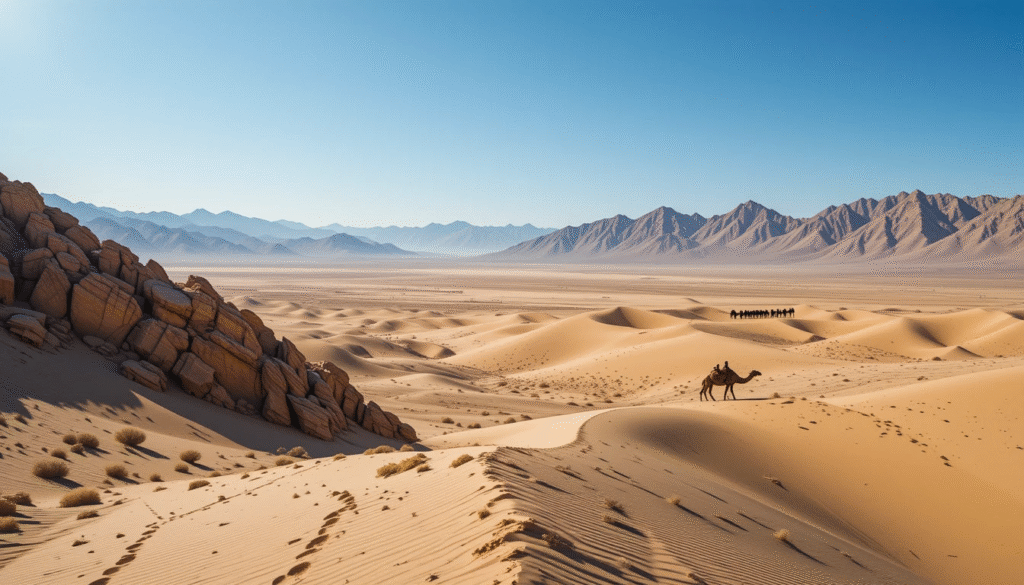
The Gobi Desert is Asia’s largest desert and one of the most unique due to its cold winters and dinosaur fossils. It spans over 1.3 million square kilometers.
- Landscape: Rocky, barren terrain—not typical sand dunes
- Wildlife: Bactrian camels, snow leopards, jerboas
- Fun Fact: Known as the “Desert of Dinosaurs”
4. Kalahari Desert – Southern Africa
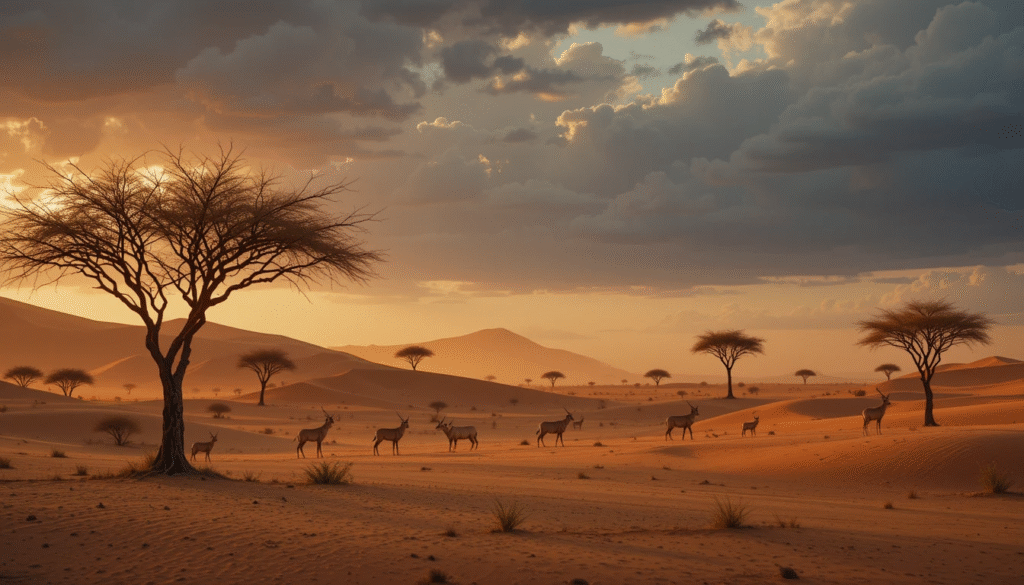
Though technically a semi-arid savanna, the Kalahari Desert spans Botswana, Namibia, and South Africa. It supports a surprising range of life.
- Wildlife: Meerkats, cheetahs, antelopes
- Culture: Home to the San Bushmen, one of the oldest tribes on Earth
5. Antarctic Desert – Antarctica
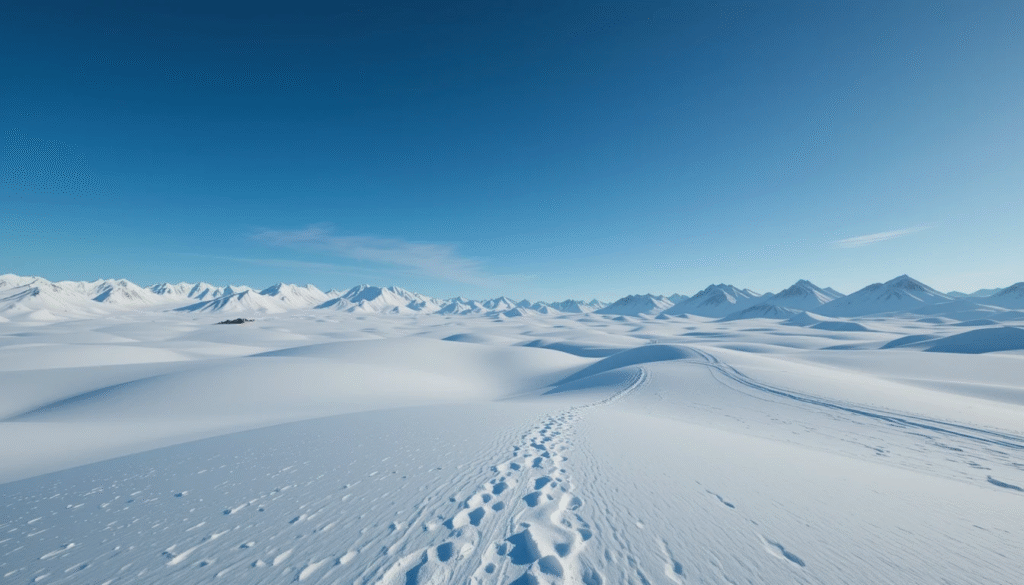
Covering 14 million square kilometers, Antarctica is the largest desert in the world by area. It receives less than 20 mm of precipitation annually.
- Conditions: −80°C temperatures, katabatic winds, icy plateaus
- Research: Home to international scientific research stations
- Fun Fact: It’s the driest, windiest, and coldest continent
6. Arctic Desert – Arctic Circle
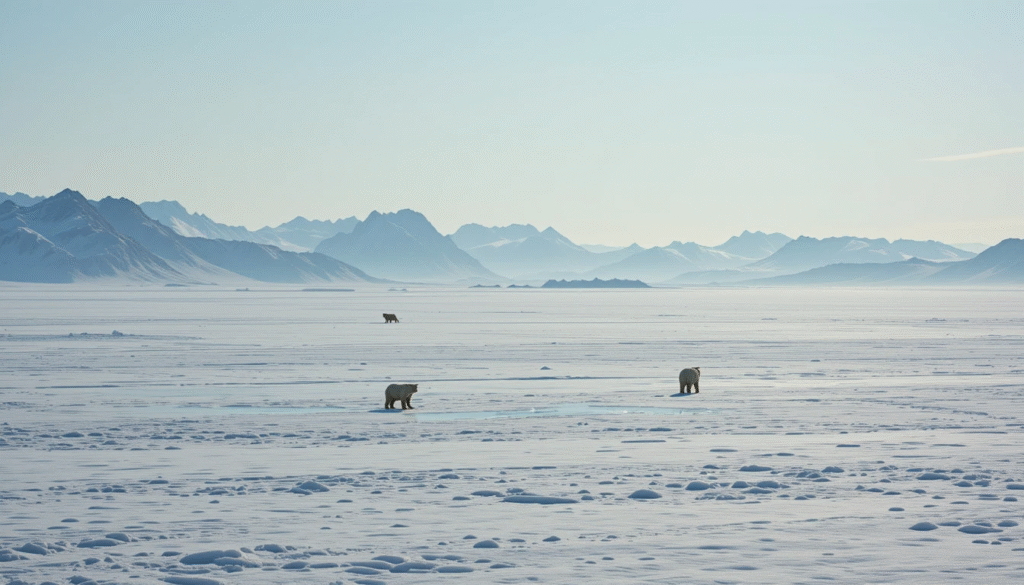
The Arctic Desert surrounds the North Pole and includes frozen ocean waters and tundra. It qualifies as a desert due to low precipitation.
- Life: Polar bears, arctic foxes, seals, and indigenous Inuit people
- Challenge: Permafrost and ice sheets dominate the landscape
7. Atacama Desert – Chile
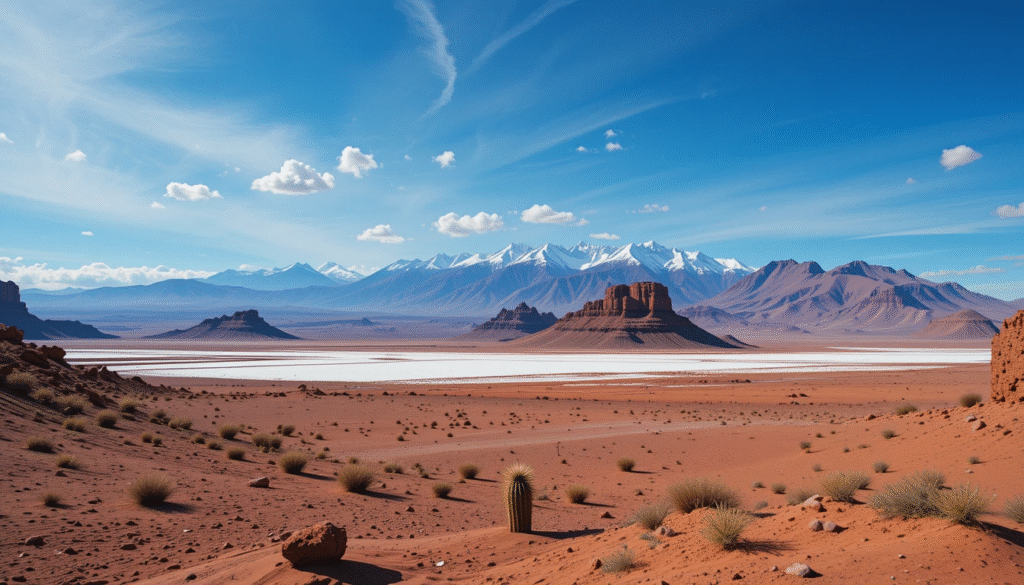
The Atacama Desert is the driest non-polar desert in the world, with parts that haven’t seen rain in over 500 years.
- Landscape: Salt flats, rocky valleys, volcanoes
- Astro-tourism: One of the best places for stargazing
- Fun Fact: Used by NASA to simulate Mars conditions
8. Thar Desert – India & Pakistan
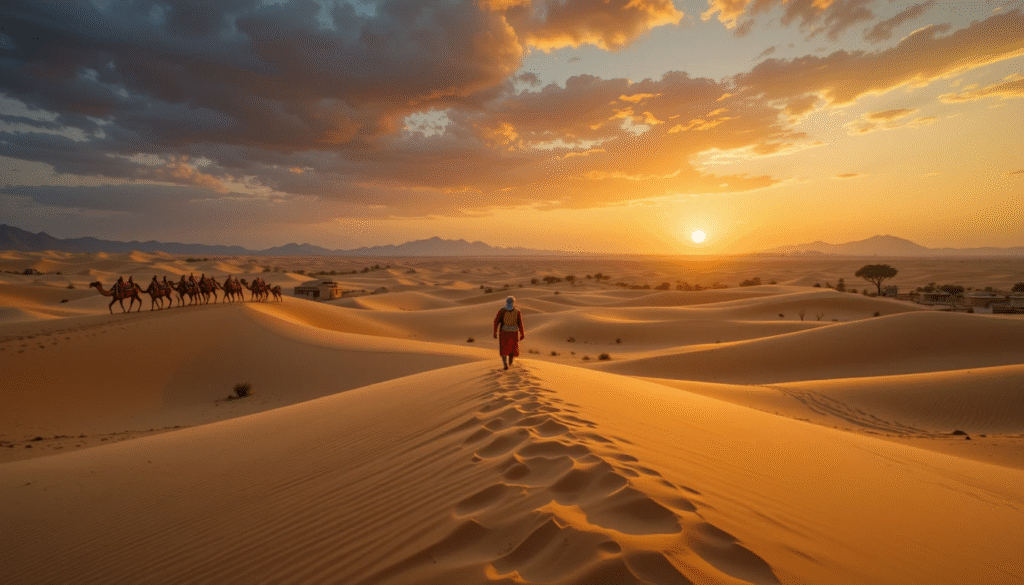
Also known as the Great Indian Desert, the Thar Desert is rich in culture and biodiversity. It spans over 200,000 square kilometers.
- Life: Camels, blackbucks, desert foxes
- Culture: Folk music, camel fairs, desert fort cities like Jaisalmer
9. Great Victoria Desert – Australia
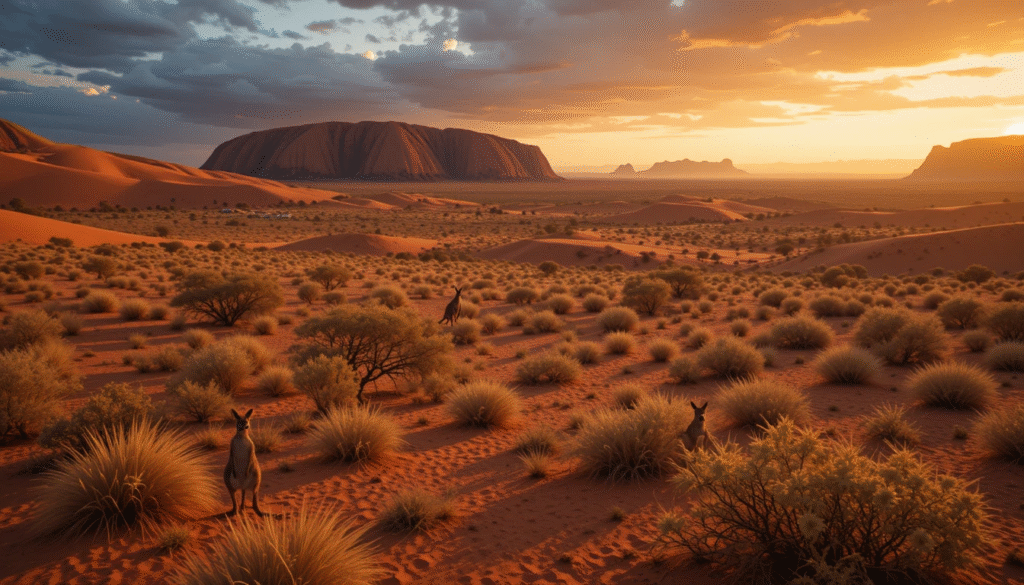
The largest desert in Australia, covering parts of Western and South Australia, the Great Victoria Desert is known for its red sands and Aboriginal communities.
- Flora: Spinifex grasses and desert wildflowers
- Threats: Mining and invasive species
10. Patagonian Desert – Argentina
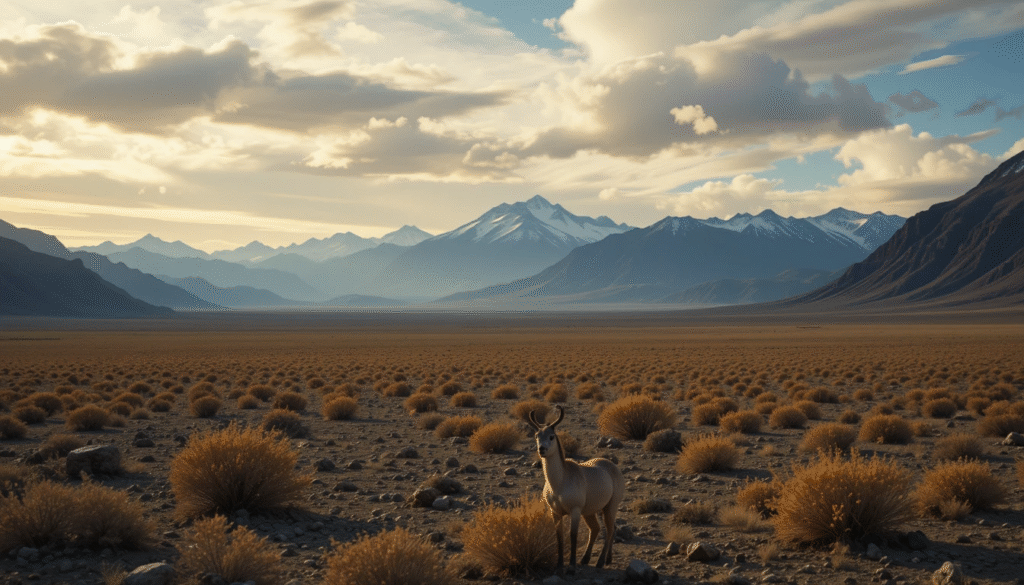
The Patagonian Desert is South America’s largest desert. Known locally as the Patagonian Steppe, it spans over 670,000 square kilometers.
- Conditions: Cold and windy with sparse vegetation
- Life: Guanacos, armadillos, condors
Why Are Deserts Important?
- Ecological Role: Deserts act as carbon sinks and house endangered species.
- Climate Regulation: Their albedo (reflectivity) helps regulate Earth’s temperature.
- Cultural Relevance: Many ancient civilizations emerged in desert environments.
- Resources: Rich in minerals, fossil fuels, and medicinal plants.
Flora and Fauna in Deserts
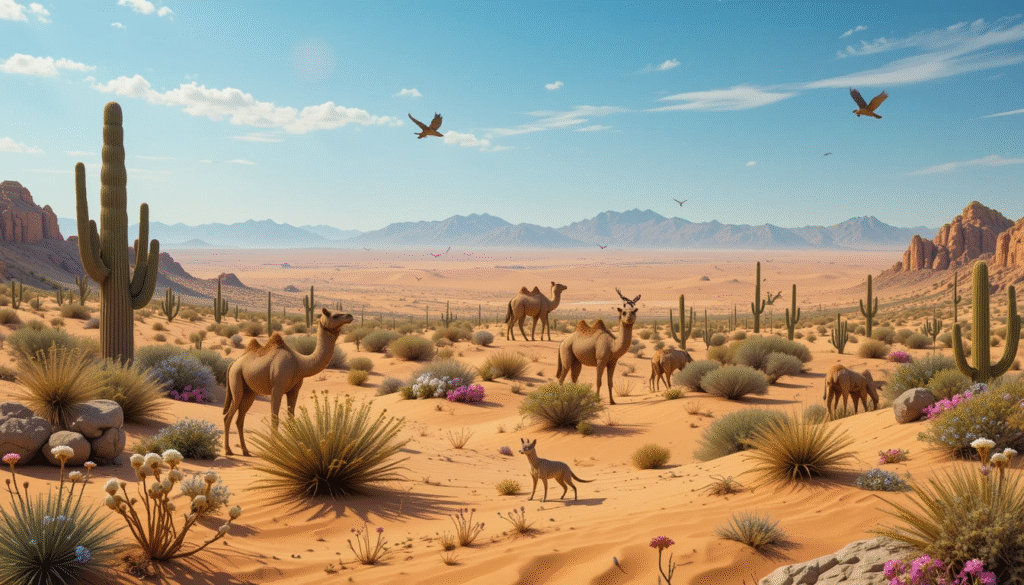
Despite the harsh environment, deserts support:
- Plants: Cactus, agave, date palms, acacia
- Animals: Scorpions, snakes, lizards, camels, foxes
- Adaptations: Nocturnal activity, water storage, burrowing habits
Extreme Temperatures and Weather
- Sahara: Can exceed 50°C (122°F)
- Gobi: Winters drop to −40°C
- Antarctica: Coldest recorded temp is −89.2°C
High diurnal temperature variation is a hallmark—scorching days and freezing nights.
Adventure Tourism in Deserts
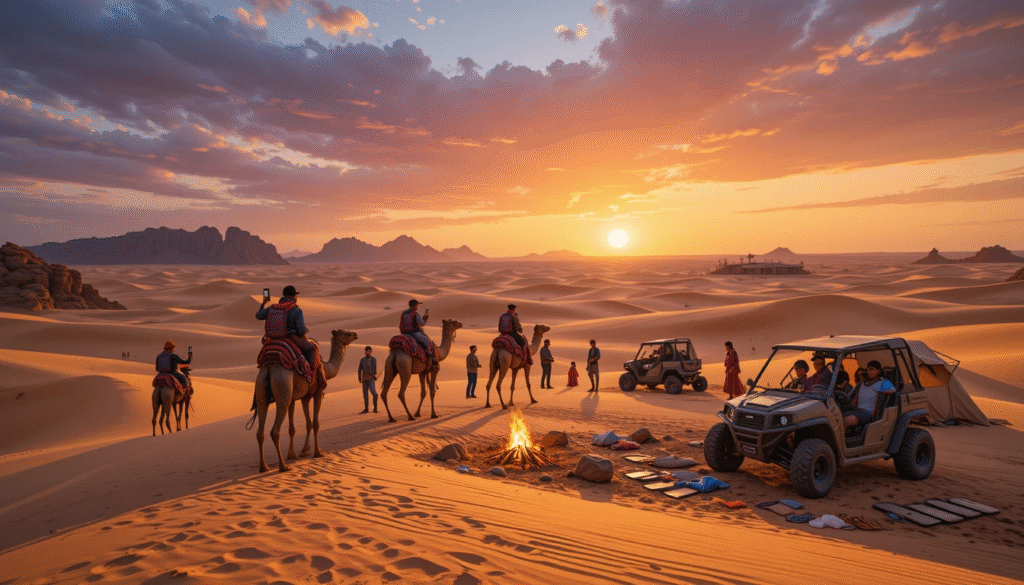
Deserts offer thrilling experiences for travelers:
- Sahara: Quad biking, camping under stars
- Atacama: Salt lakes, geysers, astronomy
- Thar: Folk festivals, camel rides, desert forts
- Gobi: Dinosaur fossils, yurt stays, trekking
Deserts and Climate Change
Deserts are expanding due to desertification driven by:
- Overgrazing
- Deforestation
- Climate change
This threatens biodiversity and affects indigenous communities. Global reforestation and sustainable land use are vital solutions.
Top 5 Most Extreme Deserts in the World
| Desert | Type | Notable Feature |
|---|---|---|
| Antarctic | Cold | Largest, coldest, driest |
| Sahara | Hot | Largest hot desert |
| Atacama | Hot | Driest non-polar region |
| Gobi | Cold | Fossil-rich, temperature extremes |
| Rub’ al Khali | Hot | World’s largest sand desert |
Conclusion
The 10 Top Deserts of the World aren’t just barren lands—they are dynamic systems with stories etched in sand, rock, and ice. From the icy extremes of Antarctica to the fiery dunes of the Sahara, each desert reveals the raw resilience of nature. These ecosystems are vital to understanding the planet’s past, present, and future.
Exploring them isn’t just a travel adventure—it’s a deeper connection to the Earth’s most majestic yet fragile environments.
FAQ’s
1. What are the 10 world famous deserts?
The 10 world-famous deserts include the Sahara, Gobi, Kalahari, Atacama, Mojave, Thar, Namib, Sonoran, Patagonian, and Arabian Deserts. These deserts are known for their unique landscapes, extreme climates, and ecological importance.
2. What are the 10 largest deserts in the world?
The 10 largest deserts are: Antarctica, Arctic, Sahara, Arabian, Gobi, Kalahari, Patagonian, Great Victoria, Syrian, and Great Basin. Deserts can be hot or cold, and size is measured by land area.
3. What is the top 10 hottest desert?
The 10 hottest deserts are Sahara, Lut, Sonoran, Mojave, Kalahari, Dasht-e Lut, Thar, Atacama, Arabian, and Dasht-e Kavir. Lut Desert in Iran holds the record for Earth’s highest surface temperature.
4. What are the top 10 countries with the most deserts?
Top 10 countries with the most deserts are: China, Australia, USA, Algeria, Saudi Arabia, Argentina, Iran, Egypt, Chile, and India. These nations host multiple desert regions with varying climates.
5. What country is 99% desert?
Egypt is often considered nearly 99% desert, especially due to its vast Sahara coverage. Most of its population lives along the Nile River, the only fertile region.
